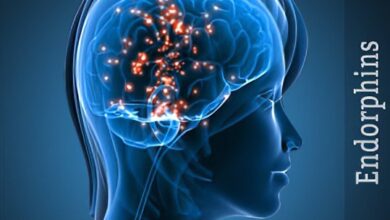What is Phototropism working positive and negative Phototropism
Phototropism
Phototropism is the growth of plants oriented towards the light stimulus.
Phototropism can be positive or negative.
When growth occurs towards the light stimulus it is called positive phototropism . When it occurs in the opposite direction, it is called negative phototropism .
The stems show positive phototropism, as they grow towards the light source. The roots have negative phototropism, growing in the opposite direction to the light source.
Phototropism is easily observed in nature. An example is the sunflower, which can move according to the direction of sunlight.
Another example is a potted plant in a darkened room. Over time, we can notice that the plant grows towards an open window or door, that is, towards a source of light.
Plants can present other types of tropism , depending on the external stimulus received. In addition to phototropism, geotropism is quite common. Geotropism or gravitropism corresponds to the growth of plants guided by gravity.
How does it work?
Current thinking about the mechanism behind phototropism is as follows.
Light, with a wavelength of about 450 nanometers (blue/violet light), illuminates a plant. A protein called a photoreceptor captures light, reacts to it, and triggers a response. The group of blue light photoreceptor proteins responsible for phototrophism are called phototropins. It is unclear exactly how phototropins signal auxin movement, but it is known that auxin moves to the shaded and shaded side of the stem in response to exposure to light.
Auxin stimulates the release of hydrogen ions in the cells on the shady side of the stem, which cause the pH of the cells to decrease. The decrease in pH activates enzymes (called expansins), which cause the cells to swell and cause the rod to bend toward the light.
Positive and negative phototropism
When there is a focus of light over a forest area, the plants move towards this focus and thus a positive phototropism occurs. On exceptional occasions, plants avoid the focus of light, producing the phenomenon of negative phototropism.
In the case of positive phototropism, ancient botanists were already trying to understand what were the internal mechanisms that explain this phenomenon. For centuries there was no satisfactory explanation, until finally a conclusion was reached : auxin is the molecule in plant cells that activates movements towards light. Auxin are plant hormones that participate in plant growth and movement.
When there is a beam of light directed at a plant, this causes the concentration of auxin to increase on the side of the plant that is away from the light. In this way, the cell walls that accumulate a greater amount of auxin stretch and the plant bends towards the light source.
Despite the advances made, it is still unknown which are the internal mechanisms that explain the concentration of auxin. However, it has been observed that blue light is the cause of the sensitivity of plants towards light. Anyway, it is known that the distribution of auxin is associated with luminosity.
Phototropism and the action of auxins
Auxin is a plant hormone that has, among its functions, the growth and elongation of cells . Auxin is produced by the apical meristem of the stem.
The action of auxins in plants is influenced by light. Hence its relationship with phototropism.
Light causes auxin to migrate to the darker or shaded side of the plant. In this region, auxin promotes cell elongation and plant growth.
With the accumulation of auxin on the shaded side, this part grows larger than the side that is exposed to light. As a consequence, it causes the stem to bend towards the side where the light comes from.


